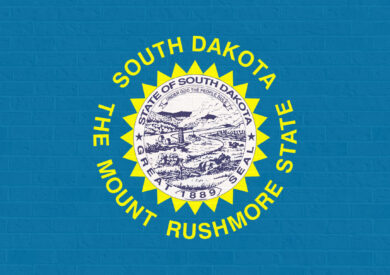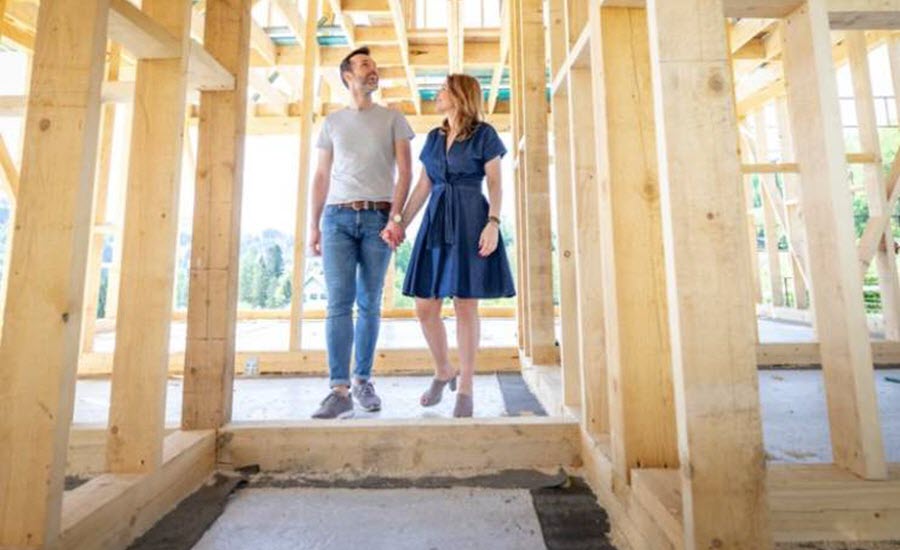
 Popular Cities For Lending in South Dakota
Popular Cities For Lending in South Dakota
Huron
Mitchell
Pierre
Rapid City
Rapid Valley
Sioux Falls
Spearfish
Vermillion
Watertown
Yankton
In the South Dakota real estate market, grabbing properties before your competition is essential for making the best deals. Although real estate investors sometimes go the traditional route and seek bank loans, the process is anything but speedy.
When time is of the essence, waiting for the lengthy process of getting approval is not an option for most investors. South Dakota hard money lenders specialize in providing hard money loans which provide quick funds to investors. These loans are for a non owner occupied property or in some cases for business purpose loans.
South Dakota Hard Money Lender FAQ’S
Below are some of the most frequently asked questions we get regarding hard money loans and lenders in South Dakota.
What Do South Dakota Hard Money Lenders Specialize in?
South Dakota hard money lenders specialize in providing short-term, creative financing for real estate investors. If you seek a conventional lender to purchase an investment property, your loan request will be based on the property’s value and your assets. Your credit score, job, and finances will be scrutinized intensely. Hard money lenders base their final loan decisions on the after-repair value. The ARV represents the potential value of a property after all repairs have been accomplished.
What are the Benefits of South Dakota Hard Money Loans?
South Dakota hard money loans offer advantages that traditional banks cannot. Lenders like Acamnet Financial offer a higher level of flexibility than banks. When qualifying for this type of loan, lenders do not delve too deeply into the finances of real estate investors. In most cases, simply present the property and your plans, which saves you the hassle of gathering countless financial documents.
Do South Dakota Hard Money Lenders Look at my Credit Score?
One of the greatest benefits of working with South Dakota hard money lenders is the lack of credit score requirements. One of the first things a bank does is check your credit score. You can get approved for a hard money loan in South Dakota even if you have bad credit or poor credit, bankruptcies, and foreclosures in the past. South Dakota Hard money lenders primarily care about the property you are purchasing.
What is the Interest Rate & Points for Hard Money Loans in South Dakota?
Interest rates for hard money loans in South Dakota are typically higher than traditional bank loans (conventional loans) because of the greater risk lenders must take on when approving loans. When searching for a hard money lender near me in South Dakota, you will find average interest rate is between 8%-15%. You should also be aware that lenders sometimes charge points that are meant to offset their administrative costs. Each point represents 1% of the total loan amount. The average points lenders charge is between 1 to 3. Some lenders may charge up to 10 points. These points are due upfront or at closing, depending on the lender.
What Should I Look for in a South Dakota Hard Money Lender?
There are many benefits to working with a South Dakota hard money lender. You just need to make sure you are working with the right lender. You can rely on Acamnet Financial Group when you need us most. We offer reliability, consistency, experience, and support. As a real estate investor, you know the importance of grabbing the best property deals when they become available.
How can Hard Money Lenders in South Dakota Help Me?
Whether you are new to real estate and real estate projects or an old pro, you know having the capital to purchase real estate is essential. Without funds, you will miss out on real estate transactions. When you partner with hard money lenders in South Dakota, you will quickly get the money you need without jumping through the hoops of traditional bank lenders.
How do I get a Hard Money Loan in South Dakota?
When you want a hard money loan in South Dakota, begin by preparing the property information. Location, size, purchase price, after repair value, repair costs, etc. In most cases, the financing will be based on these numbers. Then, apply for a hard money loan in South Dakota using this information and supply some financial information. Then, an appraisal will be ordered to assess the loan-to-value ratio, which will influence the loan amount.
How do I Refinance a South Dakota Hard Money Loan?
Refinance a South Dakota hard money loan will involve moving from a high interest, short term loan to a longer term, usually lower interest rate loan. Typically a conventional type of loan. When refinancing a South Dakota hard money loan you will find it will have a more stringent set of guidelines. You will need to have sufficient credit and income qualifications. As the lending landscaping and regulations constantly change, you want to consult a knowledgeable conventional loan expert.

Current Real Estate Trends In South Dakota (2024)
This piece aims to give an impartial and analytical review of the existing real estate trends in South Dakota. By inspecting the housing market predictions and giving out tips for selling and buying, readers can gain knowledge on the state’s real estate industry. The study is based on data-driven research and intends to present an unbiased outlook.
The housing market in South Dakota has seen considerable changes in recent years, caused by different factors such as population rise, economic circumstances, and regional progress. By examining these trends, potential buyers and sellers can make sound decisions and navigate the market efficiently.
We will start by giving a comprehensive market overview, containing essential facts and trends. We will then go into housing market predictions, taking into account expert opinions and previous data. Lastly, the article will provide useful tips for those wanting to sell or buy real estate in South Dakota.
To sum up, this piece seeks to give an all-inclusive and unbiased analysis of the existing real estate trends in South Dakota, serving as a helpful resource for those fascinated in the state’s housing market.
Market Overview
The real estate market in South Dakota has been seeing a strong rise in property values and a high demand for housing. Data shows that the median home price in the state has been steadily increasing, with an increase of 6% in the last year.
This trend can be attributed to multiple factors, such as an expanding population, low unemployment rates, and attractive mortgage rates. In addition, the economy in South Dakota is very robust and provides a solid job market, which further fuels the demand for housing.
Housing Market Predictions
In South Dakota, the housing market is anticipated to remain strong as population swells and the economy continues to thrive. Prices are expected to go up due to the limited availability of housing and high demand.
The opportunity to work remotely could draw in buyers from outside the state, adding to the positive outlook of the market.
It is vital to note that these factors will continue to shape the market in the upcoming years.
Selling and Buying Tips
Navigating South Dakota’s bustling housing market takes know-how and the right strategy. Sellers should set prices according to the latest sales data and current market conditions. Home staging is also a great way to attract buyers by showcasing the property’s best features.
Buyers should do their homework on neighborhoods, property values, and financing options. It’s also beneficial to find a reliable real estate agent to help guide them through the process.
With these tips, buyers and sellers can make informed decisions and have a successful experience.
Sources
https://www.sdnewswatch.org/stories/hurdles-to-homeownership-why-buying-a-home-is-out-of-reach-for-many-south-dakota-residents/
https://www.houzeo.com/blog/south-dakota-real-estate-market/
https://www.keloland.com/news/your-money-matters/south-dakotas-rural-real-estate-market-is-booming/

All About South Dakota
South Dakota, a state located in the North Central region of the United States, is named after the Dakota Sioux Native American tribe and achieved statehood in 1889. Bordered by North Dakota, Minnesota, Iowa, Nebraska, Wyoming, and Montana, South Dakota is divided by the Missouri River into East River and West River.
The eastern part of the state is more populated and focused on agriculture, while the western part is known for ranching, tourism, and defense spending. With a temperate continental climate and a North American grassland biome, South Dakota showcases a rich history, particularly with the presence of Native American tribes like the Sioux.
The state’s economy is primarily agricultural, yet efforts have been made to diversify through tourism and defense spending. Despite rural challenges, South Dakota consistently ranks highly for its way of life and was recognized as the happiest, healthiest state in the U.S. in 2018.
Location and History
South Dakota, located in the North Central region of the United States, has a rich history that includes its establishment as a state in 1889 and its significance in Native American relations, particularly with the Sioux tribe.
The state was named after the Dakota Sioux Native American tribe and became a state on November 2, 1889, along with North Dakota. European contact began in 1743, with the French claiming the region as part of Louisiana. The Sioux became the dominant group in the area by the early 19th century.
South Dakota has a complex history with Native American relations, including conflicts over land and the establishment of reservations. This history sets the stage for understanding the geography and climate of the state.
Geography and Climate
Located in the North Central region of the United States, the state of South Dakota is characterized by diverse geography and a temperate continental climate. North Dakota, Minnesota, Iowa, Nebraska, Wyoming, and Montana border it.
The state is divided by the Missouri River into the East River and West River. Eastern South Dakota is more populated and has fertile soil for agriculture, while western South Dakota is known for ranching, tourism, and defense spending. The Black Hills, a group of mountains sacred to the Sioux, is located in the southwest.
South Dakota experiences four distinct seasons, with moderate precipitation in the east and semi-arid conditions in the west. Its geography and climate have played a significant role in shaping the state’s history and development.
Moving forward, it is essential to explore the Native American influence on South Dakota’s culture and society.
Native American Influence
The Native American tribes in the region have profoundly impacted the state’s culture and history. The Sioux, particularly the Lakota, were the dominant group in the area before European contact. They were granted the western half of South Dakota in the 1868 Treaty of Laramie.
However, conflict arose when white miners and settlers entered the sacred Black Hills. The U.S. government broke up the Great Sioux Reservation and established five more minor reservations. The Lakota still seek the return of their land and compensation for the broken treaty.
The Wounded Knee Massacre in 1890 on the Pine Ridge Indian Reservation further strained Native American relations in the state. This history of Native American influence sets the stage for the cultural and political dynamics in South Dakota.
Culture and Politics
Rural challenges and economic diversification have shaped the unique culture and political landscape in South Dakota.
The state’s predominantly rural areas have faced declining populations and emigration of educated young adults, as well as the mechanization and consolidation of agriculture, leading to the decline of smaller family farms.
Despite these challenges, South Dakota often ranks highly for its way of life, with the state being named the happiest and healthiest in the U.S. in 2018.
In terms of politics, South Dakota has historically been controlled by the Republican Party, but several Democrats have also represented the state in Congress.
The state’s rural character and history strongly influence its culture, which has been traditionally agricultural. However, efforts have been made to diversify the economy and attract residents.
This diversification will be further explored in the subsequent section about the state’s economy and industries.
Economy and Industries
One of the key factors driving economic growth in South Dakota has been the expansion of the tourism industry, particularly in the Black Hills region. The Black Hills, with its iconic Mount Rushmore and other natural attractions, has become a popular destination for visitors worldwide. The tourism industry has created jobs and brought in revenue for the state.
In addition to tourism, agriculture continues to play a significant role in South Dakota’s economy. The state’s fertile soil in the eastern region allows for the cultivation of crops, while ranching is prominent in the western region.
Defense spending also contributes to the economy, with several military installations in the state. Efforts have been made to diversify the economy and attract residents, with the financial service industry experiencing growth and the establishment of the Deep Underground Science and Engineering Laboratory at the Homestake gold mine site.
Despite facing challenges in rural areas, South Dakota has successfully maintained a strong economy and continues attracting visitors and investment.


 Popular Cities For Lending in South Dakota
Popular Cities For Lending in South Dakota